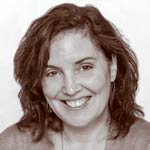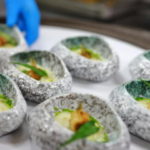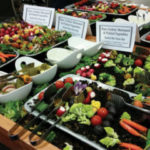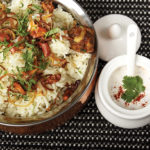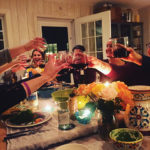At first, the fundraiser for Washington Gov. Jay Inslee seemed like it might be a straightforward sit-down meal, albeit with one catch — the team at Seattle’s Washington State Convention Center (WSCC) had only six weeks to prepare for the June 24 event.
Soon enough, there was a second catch: President Obama would be attending, too. “The original estimate was for 1,200 people,” said Krista Daniel, CMP, WSCC’s director of event services. “As soon as it was announced that President Obama was attending, [attendance] grew. It was quite a short time frame for an event of that scale.”
As the number of ticket holders swelled from 1,200 to 3,000 people, Daniel moved the event from WSCC’s ballrooms to a pair of exhibit halls, and prepped for intense security that would extend from the street perimeter to the kitchen, and involve how the dinner would be cooked, plated, and served. “This was the first time we’ve had a sitting president in the building,” Daniel said, “so the layers of security go up a notch.”
WSCC had already had a taste of presidential-level security when it hosted Vice President Joe Biden in the fall of 2014 — an experience that was an unexpected boon two years later. “We are one of only a few venues in Seattle that the Secret Service had pre-vetted out for a possible high-level event,” said Mathew Shea, WSCC’s director of sales for food and beverage.
This time around, though, the Secret Service required that the dinner’s components be transported to a secured area before they could be plated and served — and that the kitchen and serving staff not leave that secured area for the duration of the meal. Even with 30 years in the kitchen under his belt — more than 13 of them at WSCC — it was a unique challenge for Executive Chef José Luis Chavez and his award-winning team. But they took it in stride. “After 13-and-a-half years here, you know how to plan and put together a meal for that many people,” Chavez said. “It takes focus and training.”
PREP WORK
First, the components of that meal had to be decided. Newman Partners, a third-party planning firm working on behalf of both the governor’s and president’s offices, attended a series of tastings in WSCC’s glass-walled tasting room, overlooking the kitchen. It was late spring, and the catering team had some impressive ingredients to show off. “Our main focus,” Chavez said, “is to use as many sustainable, fresh, and locally grown products from Washington as much as possible.”
Eventually, a menu was planned around a rainbow of in-season local produce, including beets, radishes, corn, tomatoes, baby squash, and lima beans, as well as goat cheese from Samish Bay Cheese, British Columbia–raised salmon, and wines from Washington state. In other words, there was no way Obama would leave the building without tasting regional products.
To keep track of the event’s details — from logistics to meal planning to security — Daniel relied heavily on a “work-back” schedule. “All of it kind of hinged on when the president was going to be in the building,” she said. “That dictated when things had to happen. You want an event to go well, but when you’re dealing with the president, for things that might make sense operationally, you’re at the mercy of the Secret Service and the Office of the White House.”
Together, Daniel and Chavez planned out how the three-course dinner would be cooked in WSCC’s sixth-floor kitchen, then transported to a backstage area of the fourth-floor exhibit hall. Because there would be no opportunities to run back to the kitchen for a missing tool or ingredient, every detail had to be ironed out ahead of time — including hundreds of special meals, from kosher and halal to gluten- or nut-free. “In a group of 3,000 people,” Chavez said, “that can be 300 or more.”
On the day of the dinner, WSCC staff would have to go through intense security checkpoints, adding to the logistical headaches. “There was nothing quick about it,” Daniel said. “You had to think this through pretty carefully. There was definitely a certain point in the planning process when the cool factor wore off for me, as there were so many moving parts.”
A TRICKY SERVICE
On the evening of June 24, guests inched through metal detectors and pat-downs. Anyone who passed through early faced a long wait until the entire process was complete. “We had to open [the room] much earlier than we would normally open, about an hour before,” Daniel said. “So we had bars set up so attendees could buy bottle service.”
Meanwhile, canine units and Secret Service agents patrolled the convention center as Chavez and his team prepped and cooked the meal before carting the food in hot boxes across a sky bridge and down two floors to the staging area. “My biggest concern was to get the food over there on time,” Chavez said. “And with security, we weren’t able to run into the kitchen [for missing items]. We made ourselves lists and made sure we had the proper quantities of vegetables, starches, and proteins. We double- and triple-checked ourselves.”
As guests took their seats at tables stocked with focaccia and wine, the kitchen team hustled to plate 3,000 roasted-beet salads with goat cheese and caraway tuiles, which they followed up with a main course of house-smoked salmon, sweet-corn risotto, roasted yellow-tomato coulis, and vegetables dressed in chervil oil. Vegetarians received toasted quinoa cakes with roasted mushrooms, tomato jam, and curry-cauliflower sauce. Dessert was deconstructed cheesecake, conceived by executive pastry chef Alina Muratova.
Guests eager to break bread with the president were to be disappointed, however: Obama ate his meal out of sight, in a holding room, before delivering a speech that praised Inslee and touched on energy policy. No matter what the president or any other diners may have thought of the food, the visible part of the meal went off without a hitch.
“The [Secret Service] seemed appreciative of me keeping track of the conversation on their behalf,” Daniel said. “They’re not meeting planners, so they don’t know how long it takes to plate up a meal. They wanted it to be a success, too. And by the time the event came and I got to see President Obama, the cool factor came back.”

